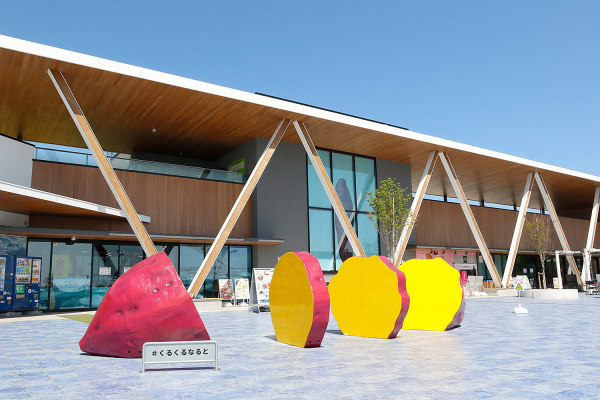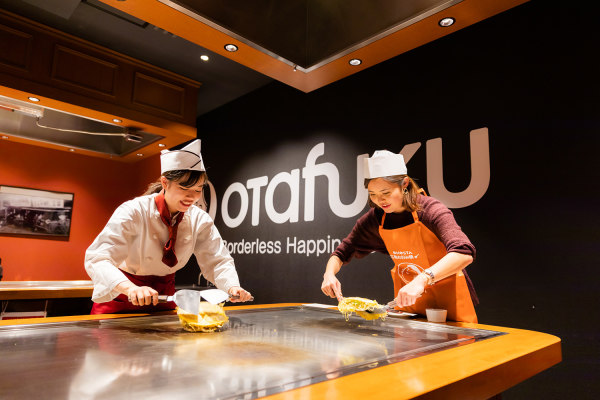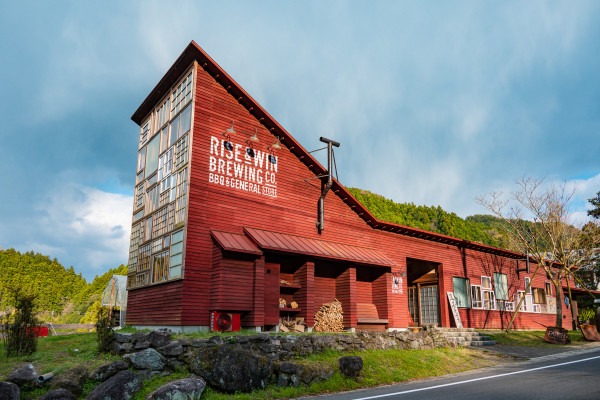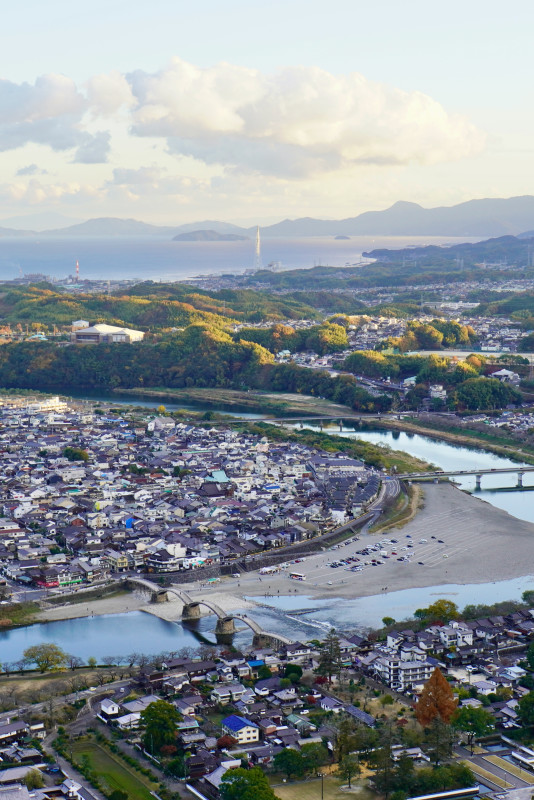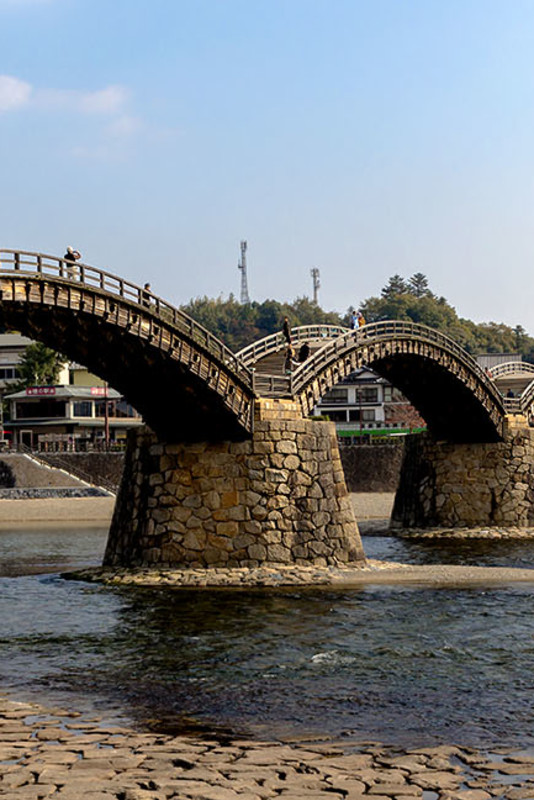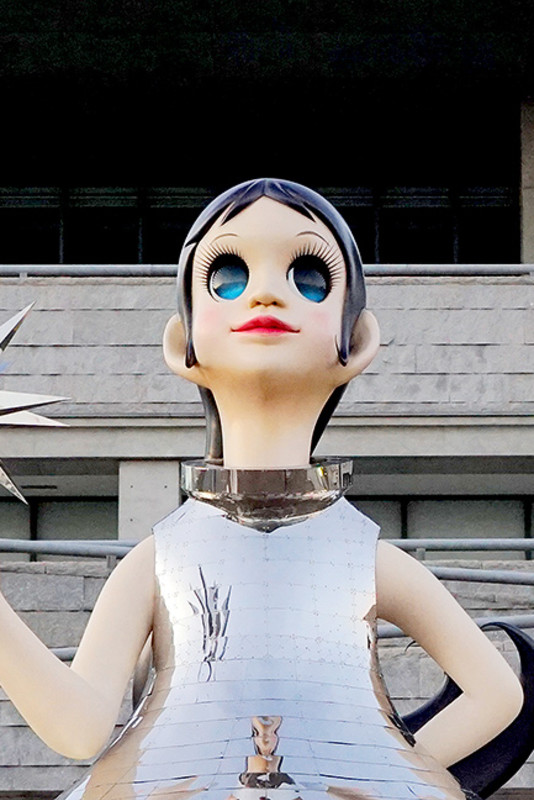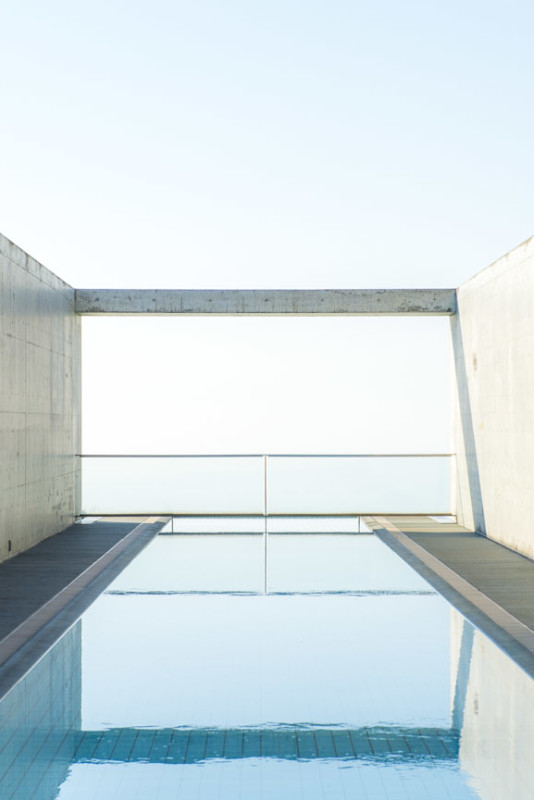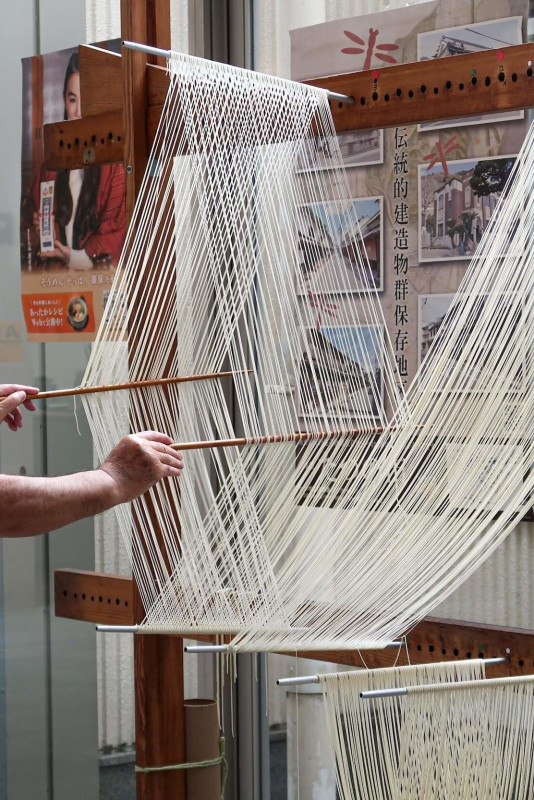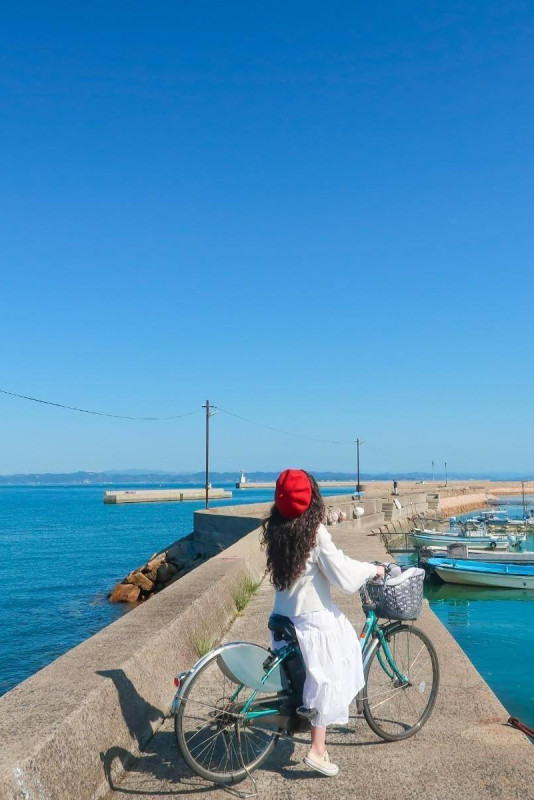Itineraries
An Island-hopping Adventure Across Setouchi’s Art Islands, Starting at World Heritage Himeji Castle

This four-day itinerary is perfect for the traveler aiming to cover the highlights of Setouchi’s art islands and experience the natural and artisanal charm of island life in the Seto Inland Sea in a short time. With many must-see sights also included, this is a trip that will delight both repeat visitors and first-timers alike.
- Day 1
- Himeji and Shodoshima
Travel: Osaka to Himeji
Take the Shinkansen from Osaka to Himeji (Approx 30 minutes)
As you will wish to take the ferry to Shodoshima before lunchtime, we recommend getting an early start and being at Himeji Castle when it opens at 9am. Please check the latest ferry schedule so that you can schedule your time at Himeji Castle accordingly.
Experience the enchanting beauty and rich history of Himeji Castle
UNESCO World Heritage Site Himeji Castle stands as a testament to Japanese architectural brilliance. The sprawling castle grounds boast an impressive collection of over eighty meticulously designed buildings, the centerpiece of which is the Tenshu-gun, a complex comprising the donjon, keeps, and connecting structures, which showcase an intricate and highly advanced system of defense that dates to feudal times. The masterful construction and exquisite woodwork are awe inspiring, as are the elegant white plastered walls, from which its nickname, ‘White Heron Castle,’ comes.
In spring, over 1000 cherry trees come into bloom, creating breath-taking scenes viewable from both outside and inside the grounds. In the autumn the same trees turn fiery red around a week or so earlier than maple trees in the regions begin to change color.
Travel: Himeji to Shodoshima
・Take a taxi from Himeji Castle to Himeji Port (Approx 20 minutes)
・Take the ferry to Shodoshima (Fukuda Port) (Approx 1 hour 40 minutes)
・Find ferry information in English here
・The best way to explore Shodoshima is by rental car or charter taxi.
Explore Shodoshima
The enchanting island of Shodoshima, listed as a top green destination, is full of cultural, historical, and natural wonders waiting to be discovered. The island also plays a central part in the Setouchi Triennale art event and many art installations are dotted throughout the island.
Like the Ohenro Pilgrimage on Shikoku, Shodoshima has its own 88-sacred-site pilgrimage route. One such site is Sekimon-dō Temple, a Buddhist sanctuary and a haven for quiet contemplation and reflection. To fully experience the natural splendor of Shodoshima, head up to Kankakei Gorge with its majestic peaks and panoramic views.
Visit Yamaroku Soy Sauce to witness traditional soy sauce production in enormous wooden barrels. In recent years, Yamaroku’s artisanal soy sauce is gaining global recognition and demand is skyrocketing. MORIKUNI is a renowned Shodoshima sake brewery and restaurant. You can taste a selection of fine Japanese sake along with a delicious meal. Their shop also stocks an extensive range of sake to take home.
Olive Beef and Olive Hamachi
As you travel around Shodoshima, you will notice the vast olive groves growing on the hillsides - a testament to the island’s flourishing olive oil industry. This thriving business has led to positive changes to some other branches of food production in Shodoshima.
Olive feed made from the leftovers of olive oil production is fed to wagyu beef cattle to create a succulent and tender meat full of umami. The flavor profile of Olive Beef has received plaudits from chefs and customers from all over Japan.
A similar type of olive feed is also fed to farmed yellowtail (hamachi) to create Olive Hamachi. The olives improve the hamachi’s quality resulting in more collagen in the muscles compared to other types of farmed fish. A trip to Shodoshima is not complete until you try both of these delicious island delicacies.
Accomodation: Olivean Shodoshima Yuhigaoka Hotel
Enjoy incredible views of the Seto Inland Sea islands and stunning sunsets from the recently refurbished suites on the Olivean Shodoshima Yuhigaoka Hotel’s Executive Floor. Soaking in the slightly alkaline waters of the on site hot springs will soak away the tiredness of travel and is a treat for your skin.
URL: https://olivean.com/en/
- Day 2
- Teshima and Naoshima
Travel: Shodoshima to Naoshima
・Take the ferry from Tonosho Port on Shodoshima to Karato Port on Teshima (Approx 20-30 minutes)
・Rental bicycles (including electric assist) are available from Karato Port
・Find ferry information in English here
Teshima Art Museum and Shima Kitchen
The result of a collaboration between artist Rei Naito and architect Ryue Nishizawa, Teshima Art Museum features a single, smooth concrete shell with no pillars. The oval windows create a bridge between the interior of the structure and the natural landscape outside. Your experience within the museum is influenced directly by the changing seasons and weather outside, meaning no two visits to the site will ever feel the same.
The restaurant Shima Kitchen aims to connect people through food and art. Shima Kitchen was created by architect Ryo Abe during the Setouchi International Art Festival 2010 and serves lunch on weekends, Mondays and public holidays. Run by local residents, it is a great place to feel the local community vibe. They also host regular performances and other events throughout the year. Make sure to check their website for opening hours and event information before you go.
Travel: Teshima to Naoshima
・Take the ferry from Teshima (Ieura Port) to Naoshima (Miyanoura Port) (Approx 20 minutes).
・Please note that you depart from a different port on Teshima than the one at which you arrived.
・Find ferry information in English here
Chichu Art Museum, Benesse House Museum, Art House Project
People travel from far and wide to visit Naoshima – the most famous of Setouchi’s ‘Art Islands.’ Naoshima’s appeal is enriched by Tadao Ando’s unique architecture that houses so many of the artworks and museums. In the Chichu Art Museum, natural light and Tadao Ando’s architecture add another dimension to the masterpieces by Claude Monet, Walter De Maria, and James Turrell on display. The Benesse House Museum houses an incredible array of work by contemporary artists including works by Yayoi Kusama and Andy Warhol. Make sure you leave enough time to visit Naoshima’s Art House Project. This art initiative transforms traditional Japanese houses into art spaces.
Accommodation: Benesse House
Benesse House as it’s not only a museum but also a hotel and Benesse House Oval is the most luxurious of its four sections (the others being the Museum, Park and Beach)section. Accessible by a small monorail, it is located on top of a hill, and each room commands a sweeping view of the Seto Inland Sea and is decorated with original artworks. Hotel guests have the privilege to experience the Benesse House Museum after hours in a completely different atmosphere, when other visitors are gone, and the sun has set.
Issen, the Museum Restaurant will let you discover fine traditional Japanese cuisine centered around the local seafood and the Terrace Restaurant, located right by the Seto Inland Sea, gives local ingredients and French interpretation. End your day with a night visit to the Sugimoto Gallery or a walk by the sea surrounded by Nikki de Saint-Phalle sculptures and Kusama’s iconic “Pumpkin”.
URL: https://benesse-artsite.jp/en/stay/
- Day 3
- Okayama and Kurashiki
Travel:Naoshima to Okayama
・Take the ferry from Honmura Port or Miyaura Port to Uno Port (Approx 20 minutes)
・Find ferry information in English here
・Take the train from Uno Station to Okayama Station (Approx 50 minutes)
La Malle de Bois
Continue the artistic theme by taking this retro-styled scenic train that makes the journey from Uno to Okayama on a limited number of days during the year. Should your visit coincide with one of these days, consider making a reservation and booking yourself a fresh seafood lunch box or sweets set to enjoy on your way to Okayama.
URL: https://www.jr-odekake.net/railroad/kankoutrain/area_okayama/lamalledebois/
Okayama Korakuen Garden & Okayama Castle
Okayama Korakuen Garden in central Okayama is considered to be one of the three great Japanese gardens. Built around 300 years ago on the order of the feudal lord Ikeda Tsunamasa, the garden was designed as a “strolling garden” where the view shifts and changes as you walk around. Okayama Castle, located across the river from the garden, is known as “Ujo” or “crow castle” due to its striking, black-paneled exterior. Take your time to explore the castle interior and the grounds. The area around Okayama Korakuen Garden and Okayama Castle is an oasis of calm in the heart of Okayama City.
Okayama Kakushi Sushi
During the Edo Period (1603-868), kakushi sushi (hidden sushi) was created by the people of Okayama to circumvent a decree by Okayama’s feudal lord Ikeda Narimasa that forbade people from placing extravagant toppings on bowls of rice. According to legend, people began hiding their delicious toppings of vegetables, shrimp, and fish underneath the rice. Japanese Restaurant Kibizen in Okayama maintains the tradition and offers authentic kakushi sushi. On first appearance, the wooden box appears to be just a layer of rice and finely shredded egg. However, flip the box upside down and you will reveal a hidden layer of delicious seasonal sashimi. The traditional dipping sauce made from pickled plums boiled in sake and dashi adds another layer of authenticity to the dish.
Travel: Okayama to Kurashiki
・Take the local train from Okayama to Kurashiki (Approx 20 minutes).
Take an evening stroll around the Kurashiki Bikan Historical Quarter
Kurashiki prospered as a political and trade center after it came under the direct control of the Tokugawa Shogunate in 1642. Kurashiki’s fortune continued during the late 19th century and early 20th century, this time led by the textile industry. As the town escaped relatively unscathed in WWII, the mix of traditional Japanese and Western-style warehouses and mansions built along the Kurashiki River still remain. Today they are protected as part of the Bikan Historical District which attracts people from all around the world for a taste of the Japan of old. As night descends, the streets are illuminated and Kurashiki takes on a serene ambiance.
Accommodation: Ryokan Kurashiki
Ryokan Kurashiki, overlooking the canal that runs through the heart of Kurashiki’s historical district, is in one of the most picturesque locations in the district and is considered the best traditional Japanese inn experience in the area. Housed in a former sugar warehouse, all Ryokan Kurashiki’s eight rooms have a traditional architectural aesthetic with stylish accents and modern comforts such as low profile western beds. The Okuzashiki suite, tucked away within the depths of the ryokan, feels like staying in your own private villa. Exquisite seasonal kaiseki dinners, featuring the abundant produce of the Setouchi region, and beautifully presented breakfasts are a highlight. Use of a private onsen is also available by reservation.
URL: http://www.ryokan-kurashiki.jp/en/
- Day 4
- Kurashiki, Kibitsu Shrine and Imbe
The Kurashiki Bikan Historical Quarter by day
Kurashiki’s historical quarter is not only expertly preserved, it is also quite lively. As well as museums such as the Ohara Museum of Art with its impressive collection of internationally acclaimed masterpieces, the Kurashiki Museum of Folkcraft and Kurashiki Archaeological Museum, a wide variety of shops, cafes and eateries, from traditional to trendy, occupy many of the traditional buildings. Ivy Square, a red brick facility on the site of a former cotton mill, offers a variety of workshop activities, including Bizenyaki pottery making, one of Japan’s oldest pottery styles. Walking from place to place passing through an historically preserved cityscape offers a fascinating and historically seamless transition from one attraction to the next.
Kurashiki Momoko
There are many places to eat around Kurashiki’s historical district, but, if you are looking for a refreshingly sweet treat, one in particular deserves a special mention. Kurashiki Momoko is very popular for its gorgeous and tasty parfaits, desserts and cakes featuring seasonal fruits, including many that are locally grown in Okayama Prefecture. Okayama’s mild climate and technical skill of its farmers have earned it the nickname of the “Kingdom of Fruit” and Kurashiki Momoko is a great place to sample some. There are four outlets to choose from, but the original “Sohonten” has an impressive collection of French Art Nouveau glassware by Émile Gallé on display.
Two hidden gems near Kurashiki and Okayama
Before heading off to your next destination, consider stopping at one of these two highly recommended - but still very much off-the-beaten-track - spots for more authentic Japanese culture.
Kibitsu Shrine
The main building of Kibitsu Shrine is built in a unique style and the way the 360m-long covered corridor that leads up to the main precinct follows the natural slope of the hill is truly impressive. The popular folk tale of Momotaro, the famous demon-slaying boy born in a peach and the, is supposedly inspired by the legend of Prince Kibitsuhiko, who is said to have defeated a great demon ogre at the exact location where the shrine in which he is enshrines stands today.
・Kibitsu Shrine is 10 minutes walk from Kibitsu Station which is approx 20 minutes from Okayama Station by local train.
Bizen Pottery Experience in Imbe
Bizen pottery has history stretching back over a thousand years, making it one of the most culturally important examples of pottery in the country. Bizen pottery does not use any glaze during the firing process. If examples of this raw, rustic art form caught your eye in galleries or restaurants during your time in Okayama, consider going to the source and visiting Imbe, the center of Bizen pottery. The Tokeido Pottery Workshop in Bizen has been producing pottery for over 500 years. This is the place to go for pottery workshops and to see authentic examples of Bizen pottery to buy as souvenirs.
・Imbe Station is approx 40 minutes from Okayama Station by local train.
































































